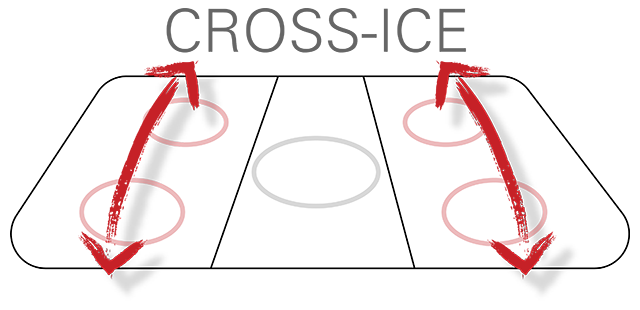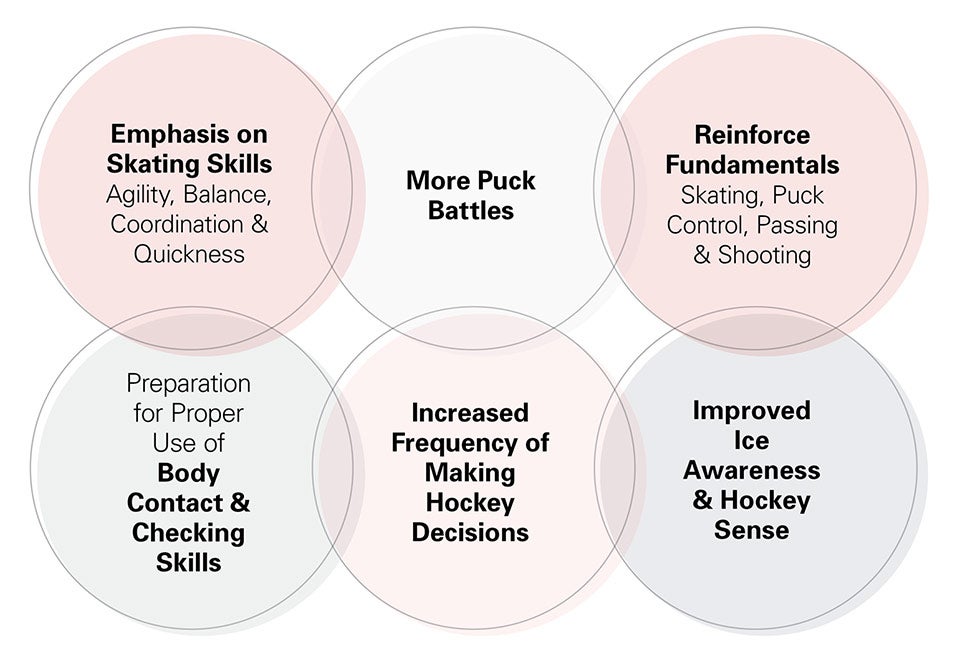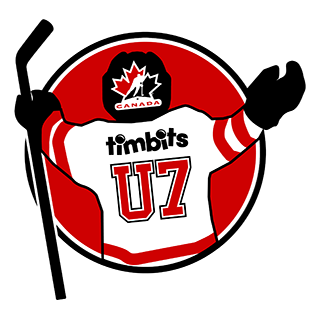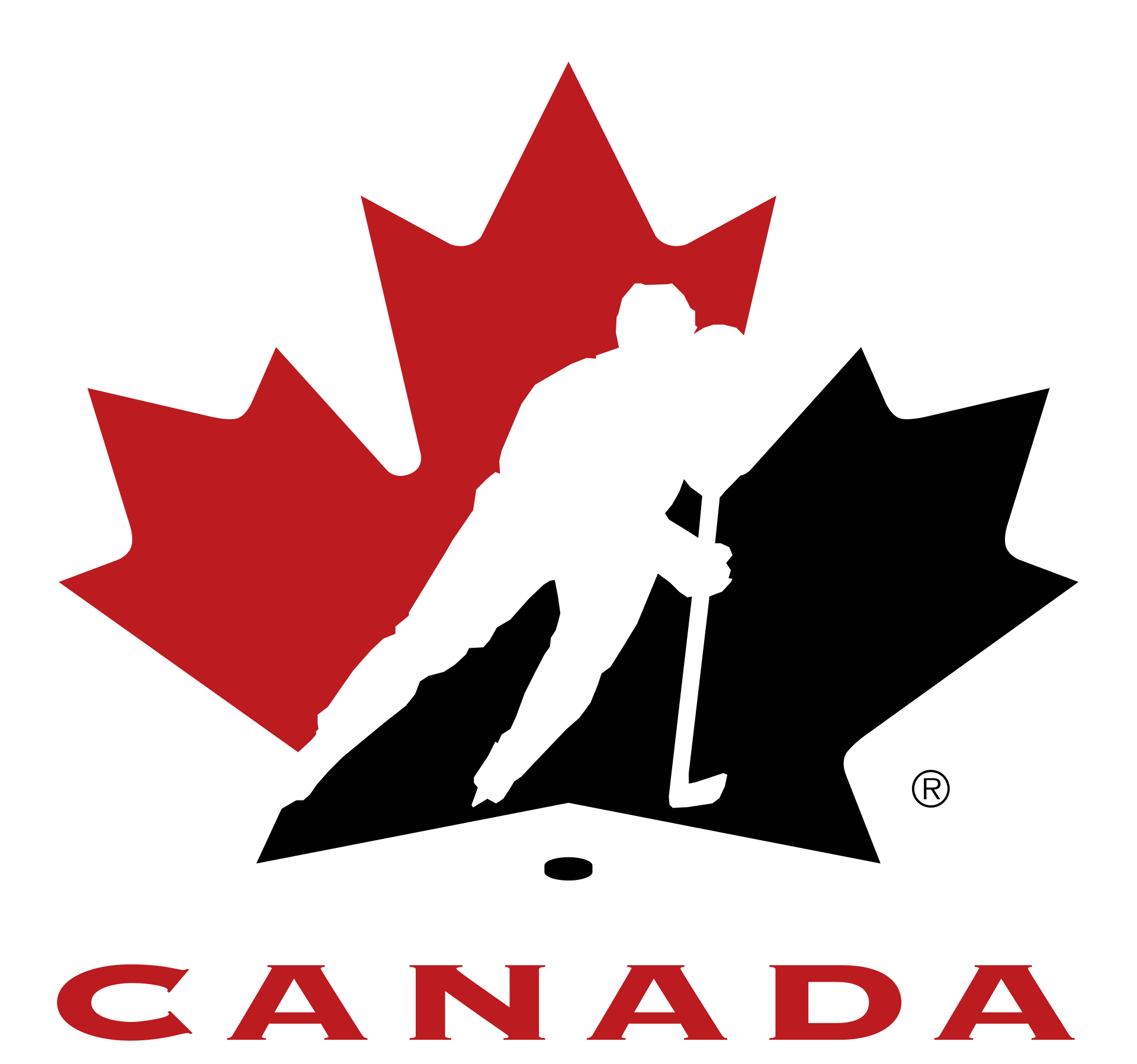Benefits of cross-ice for Timbits U7 hockey
How and why the size of the rink matters to the development of young players
Benefits of Cross-Ice Hockey
There can be concerns from parents about how small-area games may impact their child’s hockey development, but parents should trust Hockey Canada and its research. Putting young players into a competitive environment too early will compromise their development; they need to be placed into competitive situations that suit their age-specific abilities. This is why Hockey Canada’s Long-Term Player Development Model is so important.
Dividing the playing surface is a decision that has been made in consultation with experts in athlete development. It is important to understand the benefits of cross-ice hockey and why Hockey Canada has a national policy ensuring all Timbits U7 hockey is played in smaller, modified spaces.
There are several advantages to the smaller-surface games model:



You need to be able to make quick passes and have quick communication. Small area games are important.”
– Brianne Jenner,
Canada’s National Women’s Team
Timbits U7 Principles
Dr. Stephen Norris has consulted with Hockey Canada in the areas of player development and performance programming for a number of years. He was one of the founding members and contributors to the ‘Canadian Sport for Life’ movement focusing on athlete/participant development. Dr. Norris contributed to Hockey Canada in the design of the Long-Term Player Development Model and Player Pathways.
In each area outlined below, rationale has been provided and has been supplemented by Dr. Norris.
Player evaluation/selection cannot be scheduled prior to the start of the school year.
- Give local hockey associations and parents back the summer – the season does not need to start this early only to be finished at the end of January or early in February (start later and end later).
- Give local hockey associations a chance to get organized and begin planning.
- The start of school year can be very stressful for young players, and they do not need hockey evaluations starting at the same time as the school year.
The notion of evaluations taking place weeks, if not months, in advance of the actual season for this age group makes very little sense due to the realities of child development during these periods.
The summer months are a time where youngsters not only consolidate previous experiences, but also advance their competency due to aspects such as recovery from earlier specificity, demonstrate adaptation of all previous experiences to new situations and activities over the summer months, and reveal growth and development opportunities that occur naturally – physical, psychological, cognitive, motor development, social, etc.
Everyone should understand that the return-to-school period (both the couple of weeks before, the week of and the ‘wash-in period’ until the student is settled back into the routine) is an extremely stressful period for the student.
Minimum of four practices and/or skill sessions prior to formal player evaluation/selection.
- A player’s first experience in the new hockey season should not be a formal evaluation – this gives all players the opportunity to get back on the ice in a ‘player-friendly’ scenario.
- Level the playing field; not all players have a chance to go to hockey schools or prep camps prior to the start of the season.
- Provide local hockey associations the opportunity to run their own prep camp instead of members spending money outside the association.
There is a substantial benefit for children to have the opportunity to participate in four ice sessions prior to formal selection or evaluation. Players feel more relaxed and are able to perform at a higher level, compared to being evaluated in their first time back on the ice. By providing these opportunities, players are placed in a situation where stress has been mitigated and they are able to showcase their ability.
Player evaluation/selection must be a minimum of three formal sessions. Recommendation is one skills session, one small-area games session and one cross-ice game.
- Players need a chance to be evaluated – standardization means transparency, fairness and consistency.
- Provide coaches with the foundation for a solid and quantifiable evaluation.
This follows the previous point of providing ALL players with the opportunity to re-engage with hockey. For example, it would be unacceptable for a school in the first week of September to give children an exam they must pass, or else the child would not be permitted to take that subject during the school year. This would be unacceptable to parents, yet this is the impact of evaluations early in the process before anything is taught.
Development time following team selection and prior to the start of the regular season.
- It is very important to provide coaches with the opportunity to develop and improve their players’ skills prior to organized games.
- The progression should be skills before tactics and tactics before systems.
- This will eliminate or reduce the focus on and/or pressure to win.
Professional and/or knowledgeable individuals wishing to provide positive developmental experiences for children or youth should reinforce the need for an instructional or practice component prior to the start of the season. With the implementation of this policy, we are moving forward to not only accept, but welcome development opportunities for the betterment of players.
You have to be able to make plays in pretty small areas. The more you practice in small spaces, the better off you are.”
– Sidney Crosby,
Canada’s National Men’s Team



 HOCKEY CANADA
HOCKEY CANADA

